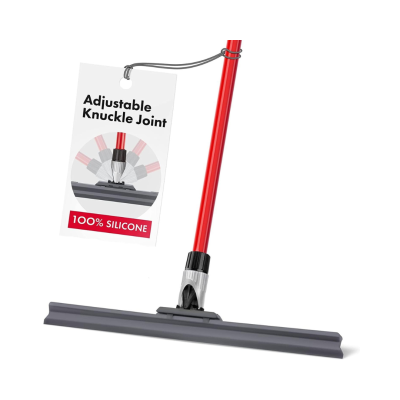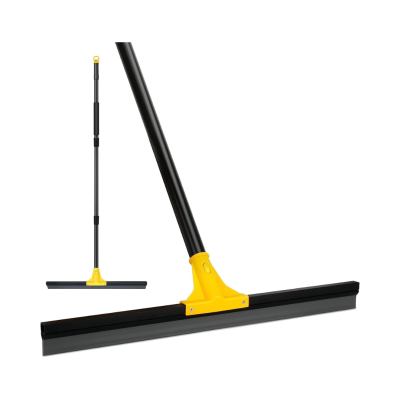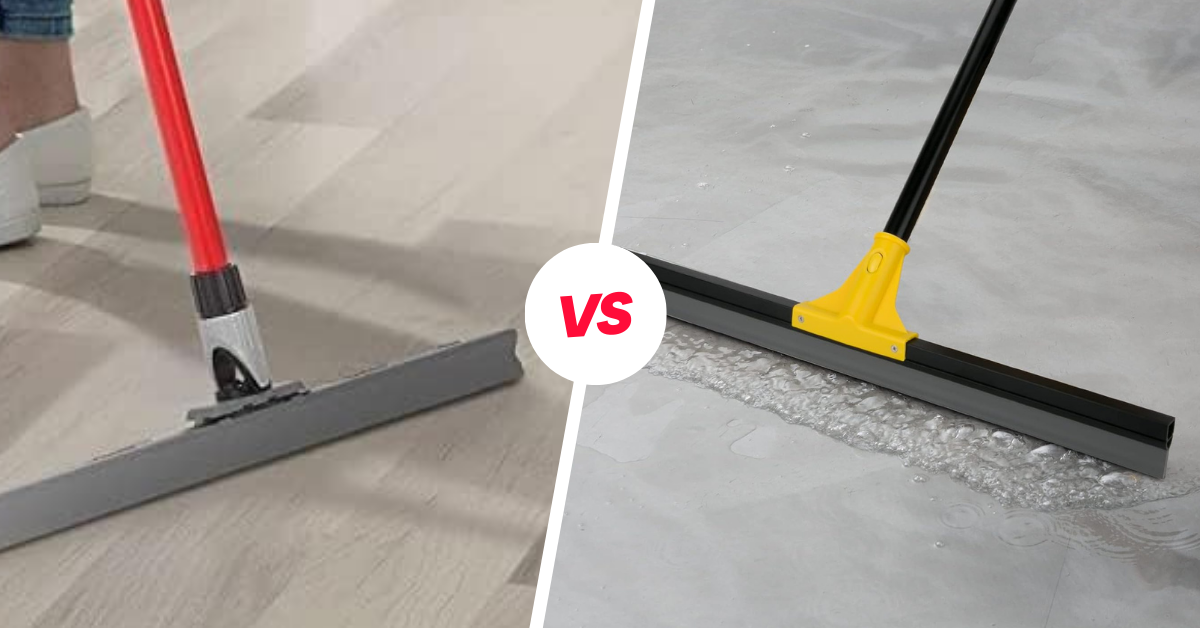When it comes to keeping things clean, choosing the right tools is a big deal. That’s why I started wondering about silicone and rubber floor squeegee – which one is better?
In my quest for a tidy space, I decided to check out both and see how they stack up. Come along as I share what I found out, breaking down the differences between these two floor squeegees:
Silicone Floor Squeegee

- Material: The blade is made of high-quality silicone, which is durable, flexible, and resistant to wear and tear.
- Durability: Silicone is known for its longevity and resistance to harsh chemicals and UV exposure, making it a durable choice that withstands frequent use.
- Flexibility: Silicone blades are highly flexible, adapting well to uneven surfaces and providing effective water removal without streaking.
- Temperature Resistance: Silicone maintains its flexibility across a wide range of temperatures, making it suitable for both hot and cold environments.
- Maintenance: Silicone is easy to clean and less prone to bacterial growth. It is also less likely to develop a sticky residue over time.
- Cost: Silicone squeegees are often priced slightly higher due to the premium quality of the material.
- Applications: Ideal for professional cleaning in commercial settings, kitchens, and areas with high traffic and frequent spills.
Rubber Floor Squeegee

- Material: The blade is crafted from rubber, a traditional material known for its elasticity and water-resistant properties.
- Durability: Rubber is durable but may be more susceptible to cracking and degradation over time, especially when exposed to certain chemicals and sunlight.
- Flexibility: Rubber blades are generally flexible, but they may not conform as easily to irregularities in the floor surface as silicone.
- Temperature Resistance: Rubber can become stiff in cold temperatures and may lose some flexibility, affecting its performance in freezing conditions.
- Maintenance: Rubber may require more frequent cleaning to prevent the buildup of dirt and grime. It can also become sticky after prolonged use.
- Cost: Rubber squeegees are generally more budget-friendly, making them a cost-effective option.
- Applications: Suitable for general-purpose use in homes, garages, and light industrial settings.
The Winner
For superior durability, flexibility, and performance, the Silicone Floor Squeegee stands out as the better choice over the Rubber Floor Squeegee, making it ideal for professional cleaning across various environments.
Buying Guide for Floor Squeegee
To ensure you make the best purchase, consider these key factors when selecting a floor squeegee:
- Material and Build: Choose durable blades with a sturdy handle for longevity.
- Blade Size and Type: Consider the blade size for your space and the type based on your cleaning needs.
- Handle Length and Material: Opt for an adjustable handle with a comfortable grip made of metal or quality plastic.
- Versatility: Ensure it suits both wet and dry applications for versatile use.
- Ease of Maintenance: Look for easy disassembly and cleaning features to simplify maintenance.
- Indoor/Outdoor Use: Select based on where you plan to use it – indoor, outdoor, or both.
- Customer Reviews: Check user reviews for real-world insights into performance and durability.
Which Floor Squeegee Would I Recommend?
Both silicone and rubber floor squeegees have their advantages and are effective for various applications.
The choice between them depends on factors such as durability, flexibility, temperature resistance, and budget constraints.
Consider your specific needs and the environment in which the squeegee will be used to make the best decision for your cleaning requirements.


[…] first glance, distinguishing between these floor squeegees may seem challenging, as many appear identical with just varying brand names. However, upon closer […]